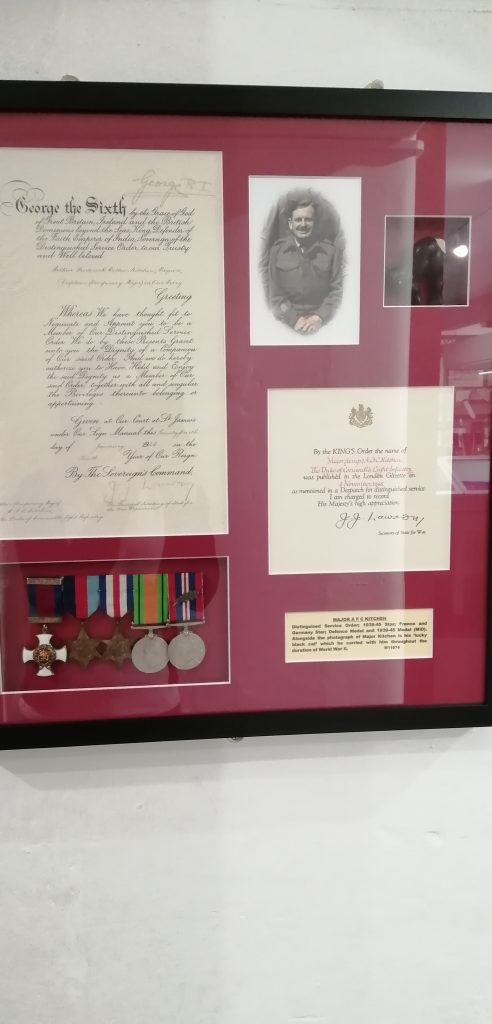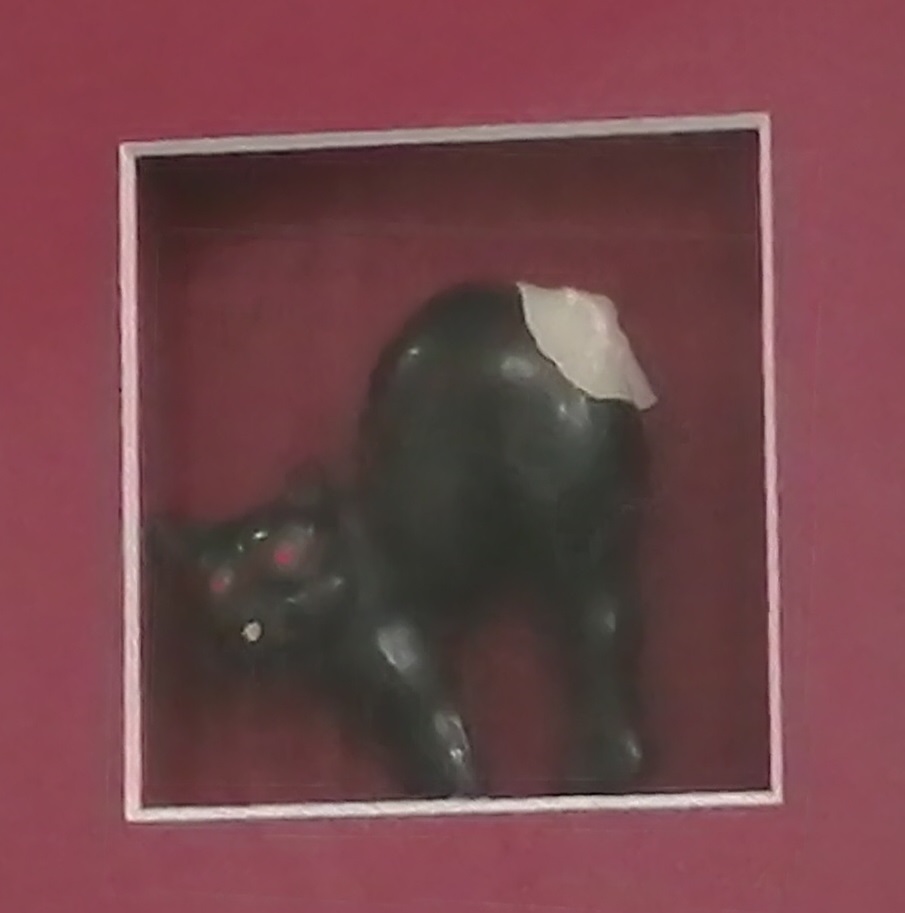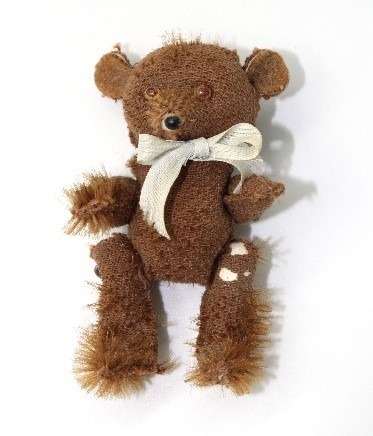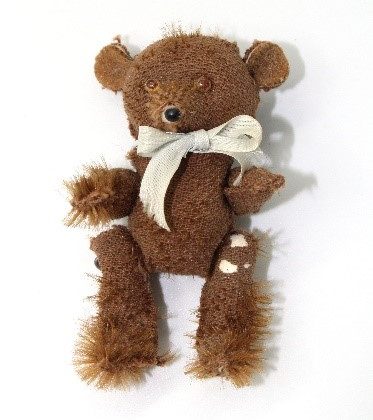Soldiers would sometimes tuck a lucky charm or keepsake in their pocket when they set off for war. Perhaps as a way of remembering times of warmth and love at a time of utter desperation and human destruction. These mascots of home may have been pulled out and admired in the trenches or simply just knowing they were there at the bottom of their pocket may have brought some comfort.
The Lucky Black Cat
We have some examples of such keepsakes in the museum, a lucky black cat which was carried by Major Arthur Frederick Cotton Kitchen DSO (Distinguished Service Order) throughout his time serving in Western Europe with 5th Battalion DCLI during WWII.

Such traditional symbols of good luck are common, and this particular cat seems to have served it’s purpose at giving Major Kitchen good luck as he was one of the lucky ones who managed to survive the brutal Second World War.


The ‘all seeing’ Pocket Bear!
We also have a pocket bear carried by an American solider from Vermont when he fought in France during The First World War. The miniature bear, was carried by the soldier as a lucky mascot. It was made by J K Farnell Teddy Bear Company. And a special feature of these bears were that they had eyes high in their heads so they could see out of a soldier’s pocket.
The bears were also bought by soldiers to be retained by their loved ones at home, to give them luck and an affectionate token to remember them by.
Most who enlisted were boys and young men, most would have never been away from home. They had little experience of the world, let alone war, death, and killing, so keeping a small object to hold may have helped their mental health and keep them connected to what they were fighting for.

